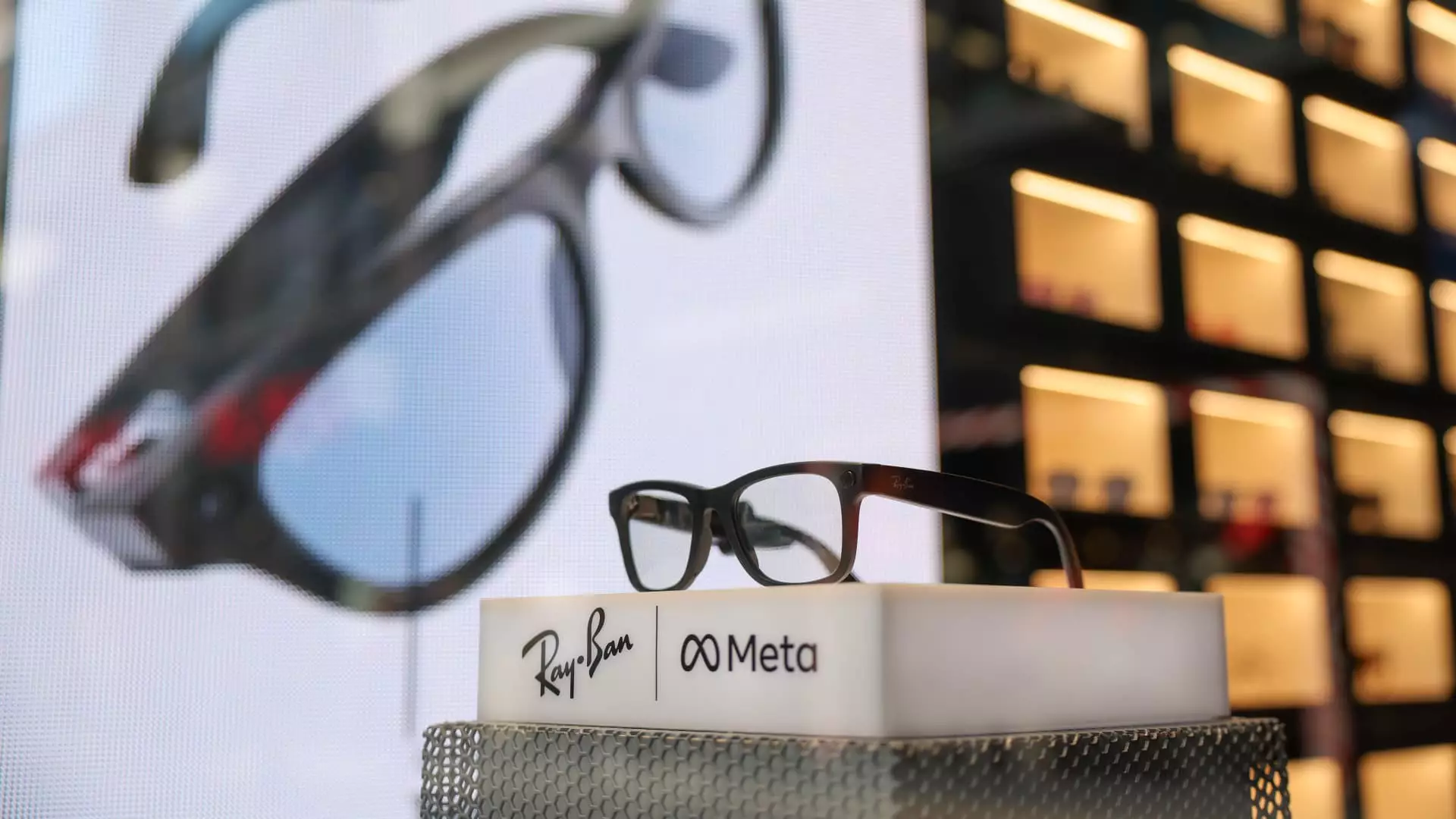As the consumer technology scene evolves, smart glasses have gained traction, presenting themselves as an intriguing alternative to more complex and expensive devices like Apple’s Vision Pro. These glasses, often equipped with functionalities reminiscent of augmented reality (AR), tend to be more accessible than the high-end virtual reality (VR) headsets currently dominating the market. Companies such as Snap and Meta are taking significant strides to enhance this new category of wearables, signaling a shift towards a more integrated tech experience.
In a landscape previously dominated by niche players like Google Glass, which was discontinued in early 2023, smart glasses are now witnessing a resurgence driven by both technological advancements and evolving consumer expectations. The anticipated wave of artificial intelligence (AI) integration is likely to serve as a catalyst for broader acceptance. HSBC’s recent analysis highlights this potential, positing that advancements in AI could soon lead to a pivotal moment where smart glasses gain mainstream popularity.
The performance of products like the Ray-Ban Meta Smart Glasses offers insight into shifting consumer preferences. As reported by HSBC, Meta’s second-generation smart glasses achieved remarkable sales figures, reaching over 1 million units in the first half of 2023, a significant leap from the 300,000 units sold during the earlier model’s introduction. This shift indicates that consumers are gradually becoming more comfortable with smart wearables, driven by the increasing functionality these devices offer.
Sunny Optical, a key player in the optics market, is well-positioned to capitalize on this growing demand for smart glasses. The company’s expertise in optical technology could play a vital role in meeting the anticipated surge in smart glasses sales, particularly as partnerships with major players like Xiaomi emerge. According to HSBC’s analysis, Sunny Optical may see its shipments of non-smartphone camera modules, crucial for smart glasses functionality, reach up to 5 million units by 2025.
Despite the optimistic projections surrounding smart glasses, the sector faces challenges that could hinder its growth trajectory. Previous attempts by wearables to achieve mainstream acceptance often foundered, as in the case of Google Glass, which struggled to find a broader user base outside of niche markets. The question of how effectively smart glasses can integrate into everyday life without alienating potential users remains a critical concern.
Moreover, the competitive nature of the technology market complicates matters. Companies like Sunny Optical find themselves navigating saturated markets, particularly in high-end smartphones and automotive applications. While certain analysts, including those at CMB International and HSBC, express optimism about Sunny’s growth, others, like JPMorgan, urge caution, highlighting slower growth rates compared to peers.
In terms of functionality, the current iteration of the Ray-Ban Meta smart glasses offers various features, including photography, music playback, and interactions with Meta’s AI functionalities. However, to drive sustained consumer interest, future developments must push the boundaries beyond basic functionalities. Offering a seamless blend of everyday usability and advanced tech could be the key differentiator in a crowded marketplace.
The smart glasses sector represents an exciting convergence of technology and consumer experiences, with companies actively working to establish a foothold in this emerging market. As the technologies evolve and authorities like HSBC predict an upward trend in sales, the potential for smart glasses to transition from niche to commonplace may hinge on their ability to overcome past failures and address current market challenges.
In the longer term, the integration of AI and more advanced capabilities will play a pivotal role in the acceptance and adoption of smart glasses. Whether the market can fully embrace this innovation remains to be seen. Nonetheless, the trajectory appears promising, suggesting that a new era of wearable technology may be upon us, contingent on navigating the complexities of consumer behavior and technological advancements.


Leave a Reply